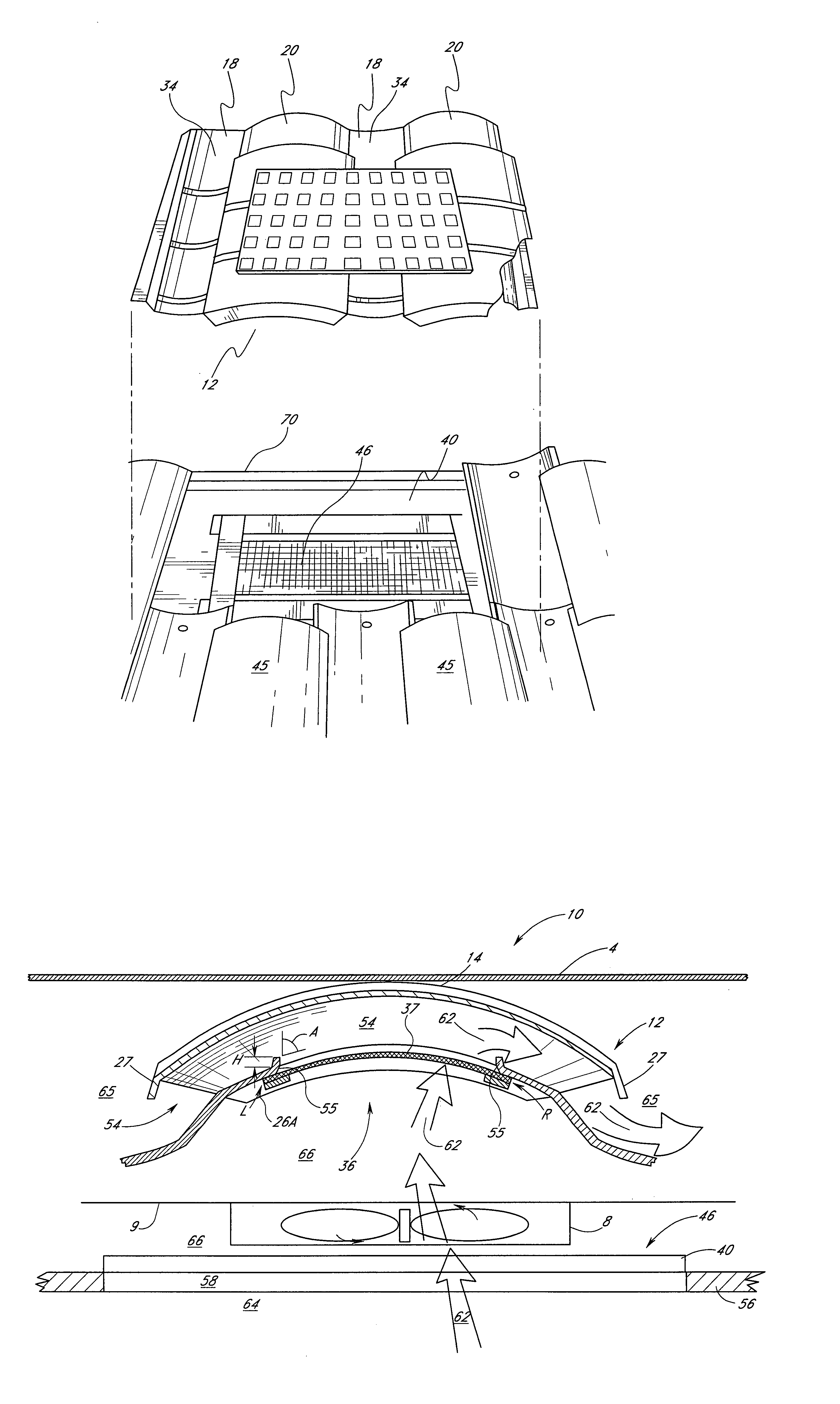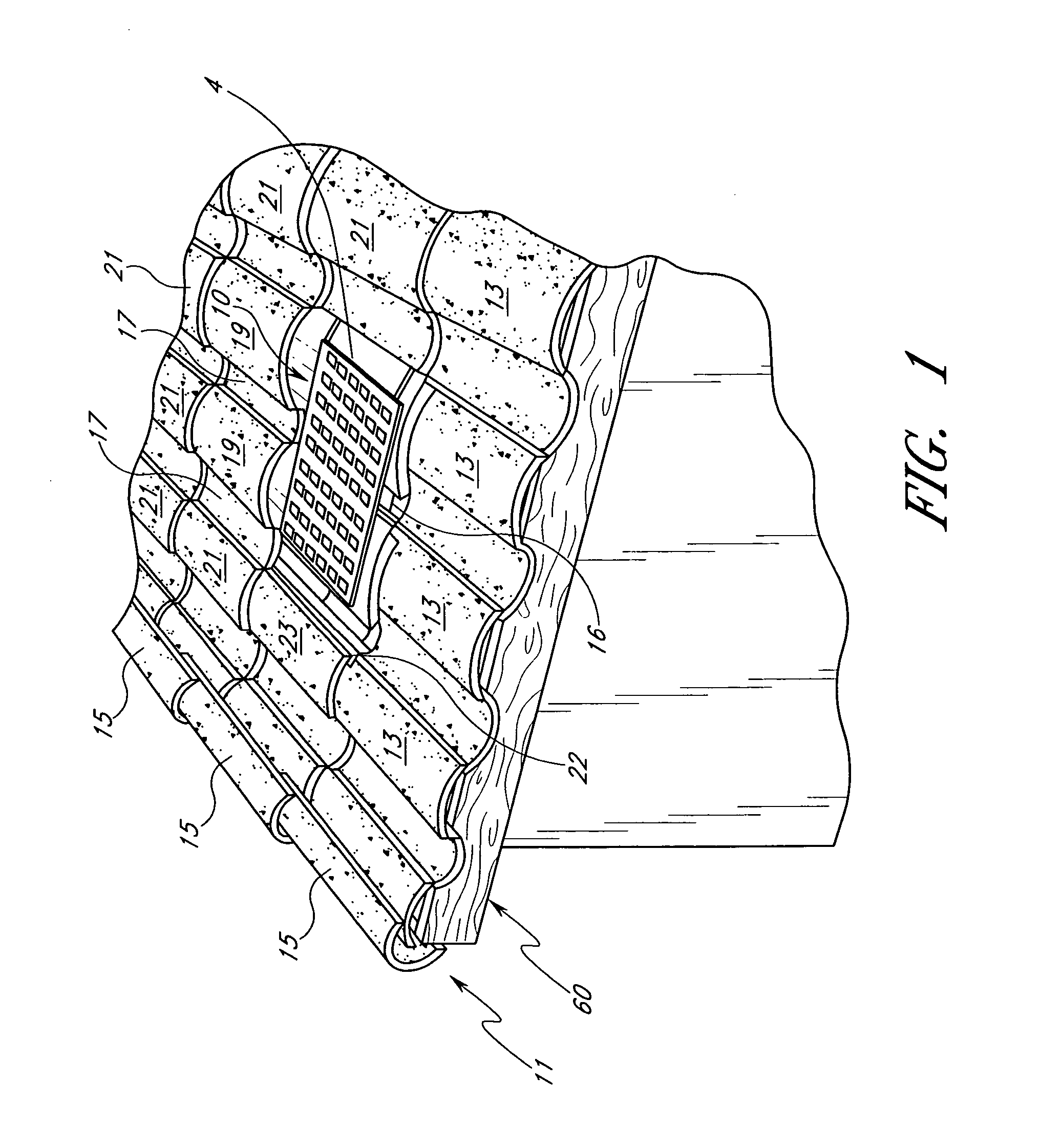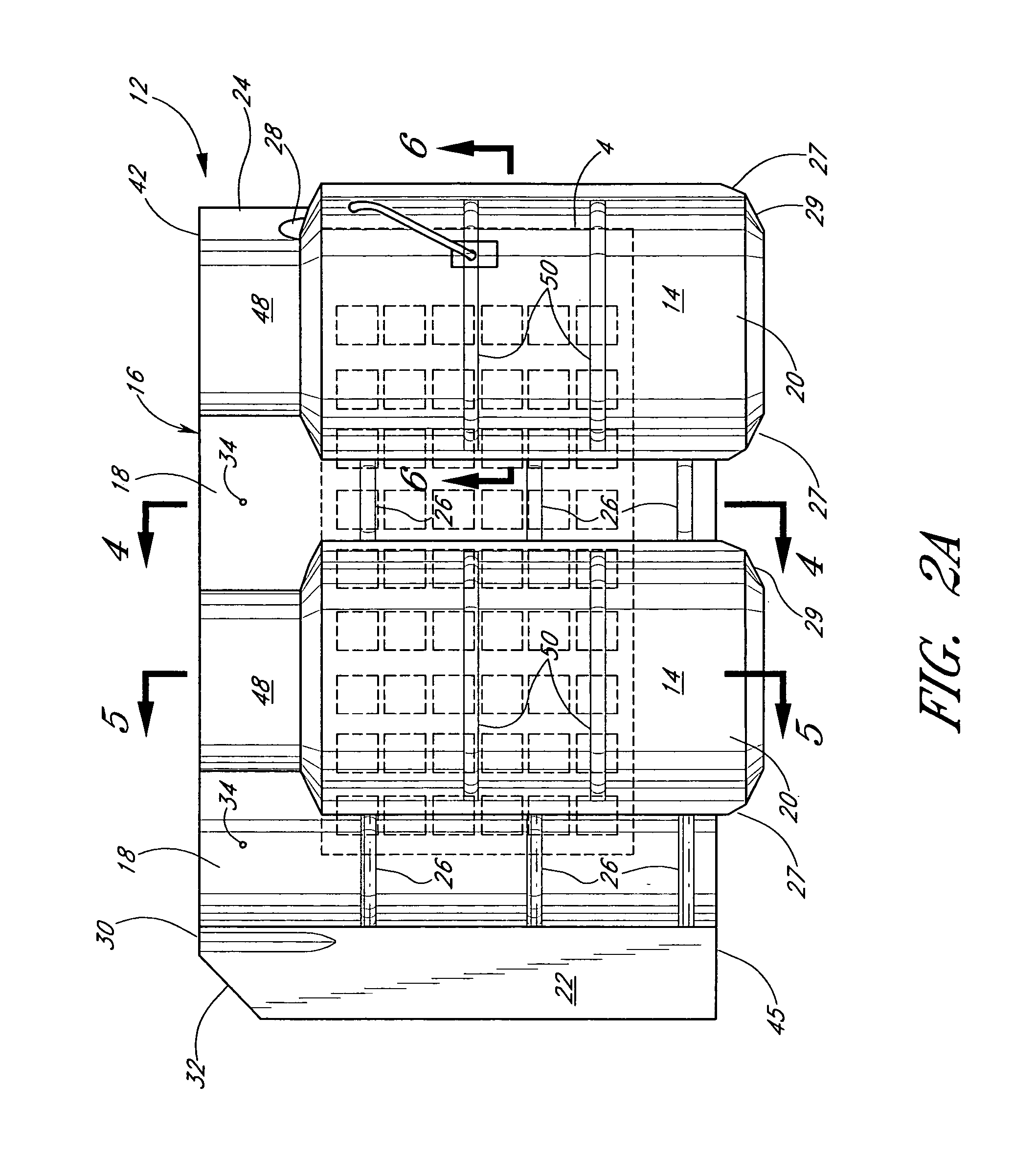Solar-powered attic vent with a one-piece, fitted skeleton
a solar energy and attic vent technology, applied in ventilation systems, lighting and heating apparatus, heating types, etc., can solve the problems of robbing the insulation of much of its r value, passive ventilation systems do not teach camouflaged active ventilation systems, and the most common energy loss in a home, so as to achieve a minimal negative effect on the appearance of the building
- Summary
- Abstract
- Description
- Claims
- Application Information
AI Technical Summary
Benefits of technology
Problems solved by technology
Method used
Image
Examples
Embodiment Construction
[0020]Preferred embodiments of the vents described herein preferably have two pieces, a primary vent and a secondary vent, and they may be made, without limitation, of such materials as aluminum, steel or copper. The primary vent is installed on a roof deck with a lower vent opening over a ventilation opening cut through the deck. The secondary vent, having a top surface to which the solar panel is preferably attached and an underside to which the fan is preferably attached, is constructed in the illustrated embodiments to otherwise look like the surrounding field tiles and is installed over the primary vent. The secondary vent has a skeleton with one or more vent openings through the cap areas. The caps are preferably spaced from the underlying cap areas of the skeleton and cover the upper vent opening(s), thereby creating a ventilating access between the cap areas and the caps. The one or more vent openings in the secondary vent and the opening in the primary vent conduct air betw...
PUM
 Login to View More
Login to View More Abstract
Description
Claims
Application Information
 Login to View More
Login to View More - R&D
- Intellectual Property
- Life Sciences
- Materials
- Tech Scout
- Unparalleled Data Quality
- Higher Quality Content
- 60% Fewer Hallucinations
Browse by: Latest US Patents, China's latest patents, Technical Efficacy Thesaurus, Application Domain, Technology Topic, Popular Technical Reports.
© 2025 PatSnap. All rights reserved.Legal|Privacy policy|Modern Slavery Act Transparency Statement|Sitemap|About US| Contact US: help@patsnap.com



